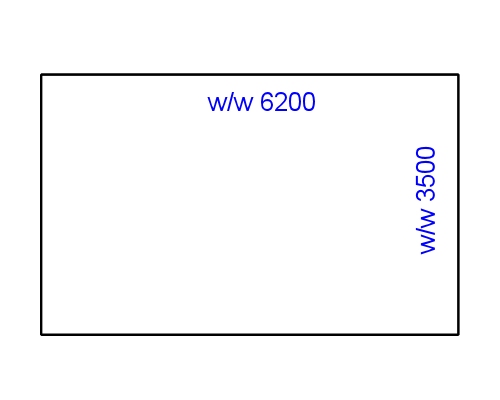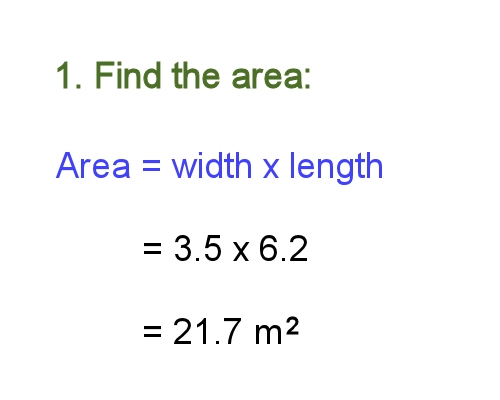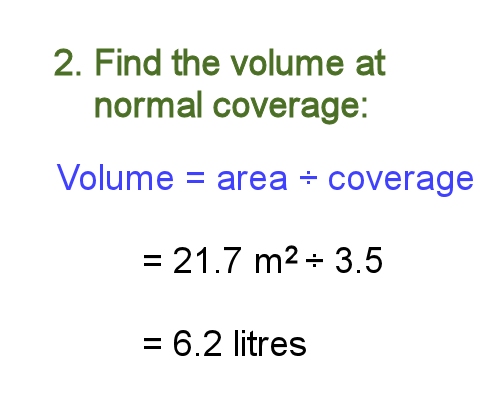Estimating quantities
 Audio for slide 1 (mp3 |6|KB)
Audio for slide 1 (mp3 |6|KB)
We looked at the basic principles of estimating primer and underlayment quantities in the unit: Planning and costing.
You'll recall that the simple formula for working out the amount of primer needed to cover a floor is:
Area of floor ÷ coverage of product = volume required
The units of measure that these figures are generally expressed in are:
- Area of floor - square metres (m2)
- Coverage of product - square metres per litre (m2/L)
- Volume required - litres (L)

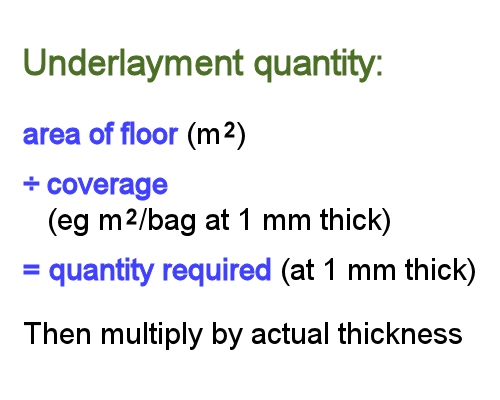 Audio for slide 2 (mp3 |6|KB)
Audio for slide 2 (mp3 |6|KB)
However, this time the coverage is generally shown in square metres per bag or kilogram at a given thickness (m2/bag or m2/kg at whatever thickness the manufacturer nominates).
This means that if your finished thickness is going to be different from the manufacturer's nominated thickness, you'll need to make an adjustment to the quantity.

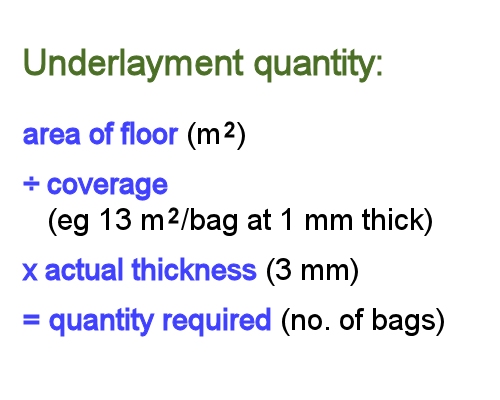 Audio for slide 3 (mp3 |6|KB)
Audio for slide 3 (mp3 |6|KB)
Coverage: 13 m2/bag at 1 mm thick
To work out the total quantity of compound required, you would need to use the same formula and multiply your answer by 3.

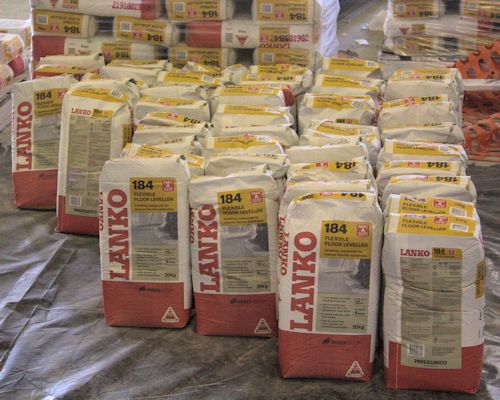 Audio for slide 4 (mp3 |6|KB)
Audio for slide 4 (mp3 |6|KB)
If you need to revise these basic principles before we move on to some more complex examples, go to the following lessons in Planning and costing:
You may also want to revise the maths basics that underlie these calculations in the unit: Making measurements.

 Audio for slide 5 (mp3 |6|KB)
Audio for slide 5 (mp3 |6|KB)
Ramps
In geometric terms, ramps are actually triangular prisms. That is, they are a normal square or rectangular shape on top, but their depth is triangular.
Let's say you needed to build a ramp between two rooms to accommodate a floor height difference of 20 mm. You have chosen a slump-free repair mortar with a coverage rate that reads:
Coverage: 12 m2 at 1 mm thick (per 20 kg bag)
The steps involved in working out the quantity are as follows. Remember that we have to convert all measurements from millimetres to metres for these calculations.

 Audio for slide 8 (mp3 |6|KB)
Audio for slide 8 (mp3 |6|KB)
3. Find the total number of bags
In our case, the ramp thickness goes from 0 mm at one end to 20 mm at the other. So the average thickness is 10 mm. In other words:
Average thickness = thickness at start + thickness at end ÷ 2
= 0 + 20 ÷ 2 = 10 mm
This means we need to multiply the Step 2 figure by 10:
0.15 x 10 = 1.5 bags

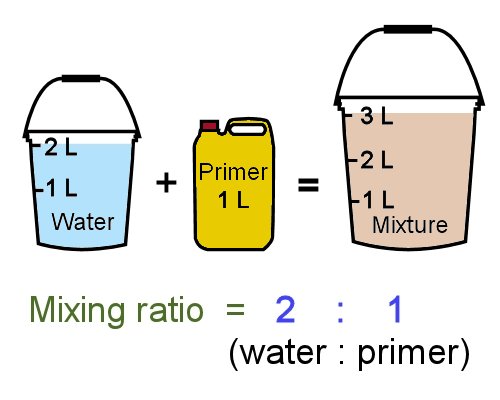 Audio for slide 10 (mp3 |6|KB)
Audio for slide 10 (mp3 |6|KB)
This means that 2 parts water will be added to every 1 part primer. In other words, if there was a total of 3 litres required for the floor, 2 litres would be water and 1 litre would be primer.
How much water and primer will you need for this job?

 Audio for slide 13 (mp3 |6|KB)
Audio for slide 13 (mp3 |6|KB)
Step 3: Find the water and primer volumes
A water/primer ratio of 2:1 means: 2 parts water + 1 part primer = 3 parts in total. So:
| Volume of water | = total volume ÷ total no. of parts x no. of parts water |
| = 6.2 litres ÷ 3 parts (in total) x 2 parts (water) | |
| = 4.1 litres | |
| Volume of primer | = 6.2 litres ÷ 3 parts (in total) x 1 part (primer) |
| = 2.1 litres |
You can check your answer by adding the two components together:
4.1 litres water + 2.1 litres primer = 6.2 litres in total

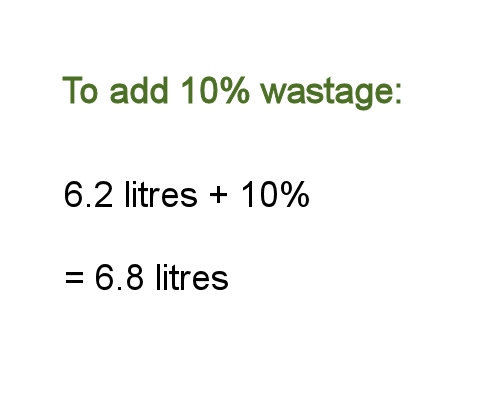 Audio for slide 14 (mp3 |6|KB)
Audio for slide 14 (mp3 |6|KB)
Wastage factors
Depending on the type of job and the products you're using, you may want to build a wastage factor into your calculations. This helps to compensate for slight variations in estimates or small amounts of wastage.
Installers often allow for 5 to 10% wastage on primers and levelling compounds. For example, if you wanted to add 10% wastage to the primer calculation above, the total volume required would be:
6.2 litres + 10% (0.62 litres) = 6.8 litres
If you need more practise on using percentages, go to the 'Decimals and percentages' lesson in Making measurements.


Learning activity
Audio 15 (mp3 |6|KB)You need to install a ramp between two floor levels, as shown in the drawing below. The slump-free repair mortar compound has a coverage rate of 14 m2 at 1 mm thick per 20 kg bag.
You will then apply a primer to the finished ramp.
The primer coverage rate is 5 m2/L. However, you will dilute the primer with water at a 1:1 ratio.
How much repair mortar and primer will you need for this job? Add a 10% wastage factor to each amount.









